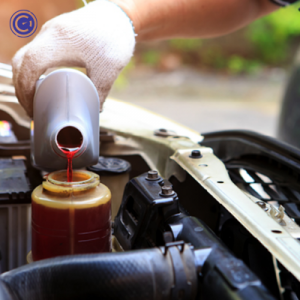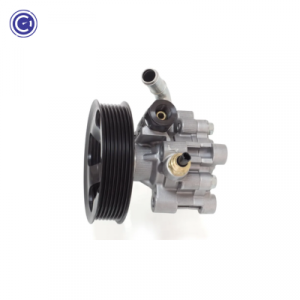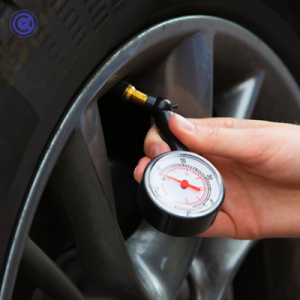Experiencing a hard steering wheel can be disconcerting and potentially dangerous. It’s a common issue that many car owners face, impacting the ease and safety of driving. Understanding why this happens and how to address it is crucial. This blog explores the various causes of a stiff steering wheel, methods for diagnosing the issue, and practical solutions to fix it.
A hard steering wheel can turn an ordinary drive into a challenging experience. It’s not just about comfort; it’s a serious safety concern that needs prompt attention. The resistance felt when turning the wheel can indicate several underlying issues with your car’s steering system.
Table of Contents
Causes of a Hard Steering Wheel

A hard steering wheel is not just a nuisance; it’s a symptom that shouldn’t be ignored, as it can indicate serious issues with your vehicle’s steering system. Understanding the potential causes is essential for car owners to address the problem effectively and ensure safe driving. Here are some common reasons why your steering wheel may be hard to turn:
Low Power Steering Fluid

Insufficient Fluid Pressure: The most frequent cause of hard steering is low power steering fluid. This fluid is crucial for the smooth operation of the power steering system. Low levels can lead to increased resistance in the steering mechanism due to insufficient hydraulic pressure.
Faulty Power Steering Pump

Inadequate Pressure Generation: The power steering pump is responsible for generating the pressure needed to assist in steering. A malfunctioning pump cannot produce enough pressure, making the steering wheel harder to turn. Signs of a failing pump include whining noises and fluid leaks.
Worn-Out Steering Components
Increased Friction and Resistance: Over time, steering components such as drive belts, pulleys, ball joints, and tie rod ends can wear out or become damaged. This wear can lead to increased friction in the steering system, resulting in a stiff steering wheel.
Tire Pressure Issues

Impact on Steering Response: Incorrect tire pressure, whether underinflated or overinflated, can affect the steering response. Underinflated tires can make the steering feel sluggish and heavy, while overinflated tires can lead to a stiffer steering experience.
Alignment Problems
Uneven Steering Resistance: Improper wheel alignment can cause uneven steering resistance, making the wheel hard to turn. Misalignment can result from hitting potholes, curbs, or from normal wear and tear. It not only affects steering but can also lead to uneven tire wear.
Suspension Issues
Effect on Handling and Steering: The vehicle’s suspension system, including components like shocks or struts, plays a significant role in handling and steering. Worn-out or damaged suspension parts can lead to a change in steering feel, often making it more difficult to turn the wheel.
Diagnostics for a Hard Steering Wheel
When faced with a hard steering wheel, conducting some basic diagnostics can help pinpoint the cause of the problem. These steps are designed to be simple enough for most car owners to perform and can provide valuable insights into the underlying issues. Here’s how to get started:
Visual Inspection
- Check for Leaks: Inspect the power steering system for any signs of fluid leaks. Leaks can often be found near the power steering pump, along the hoses, or under the vehicle where the steering rack is located.
- Inspect Steering Components: Look for visible wear or damage on steering components like belts and pulleys. Also, check the condition of the tie rods, ball joints, and other linkage components for signs of wear or damage.
Fluid Level Check

- Power Steering Fluid: Open the hood and locate the power steering fluid reservoir. Check the fluid level against the marked indicators on the reservoir. The fluid should be within the recommended range and appear clean, without any dark discoloration or debris.
- Fluid Color and Quality: Assess the color and quality of the power steering fluid. It should be clear with a red or pink hue. Cloudy, dark, or gritty fluid can indicate contamination or degradation, necessitating a fluid change.
Turning Test
- Stationary Test: With the engine running, turn the steering wheel back and forth while the car is stationary. Note any stiffness, unusual resistance, or noises during the process. This test can help identify issues with the power steering pump or rack.
- Low-Speed Maneuvering: Try maneuvering the car at low speeds in a safe area or parking lot. Pay attention to how the steering wheel responds and whether the hardness lessens or remains consistent.
Tire Pressure Check

- Proper Inflation: Ensure that all tires are inflated to the manufacturer’s recommended pressure. Underinflated or overinflated tires can significantly impact steering effort and response.
Alignment Check
Professional Assessment: If you suspect alignment problems, it’s best to have a professional wheel alignment check. Misaligned wheels can lead to uneven steering and handling issues.
Precautions and Fixes for a Hard Steering Wheel
Dealing with a hard steering wheel requires a careful approach to both identify the root cause and apply the appropriate fix. It’s essential to not only address the immediate issue but also to take preventative measures to avoid future problems. Here’s a guide to managing and fixing a hard steering wheel:
Maintaining Proper Fluid Levels
- Regular Checks: Ensure the power steering fluid is at the appropriate level. Low fluid is a common cause of hard steering.
- Fluid Quality: Replace the fluid if it appears dirty or contaminated. Using the right type of power steering fluid as specified by your vehicle manufacturer is crucial.
Servicing the Power Steering System
- Routine Maintenance: Regular servicing of the power steering pump and related components can prevent issues. This includes checking for leaks and wear.
- Pump Replacement: If the power steering pump is faulty or worn out, replacing it is often necessary to restore proper steering function.
Tire Maintenance
- Proper Inflation: Keeping tires inflated to the recommended pressure is vital. Incorrect tire pressure can lead to steering difficulties.
- Regular Inspections: Check for tire wear or damage regularly, as this can also affect steering. Rotate tires as recommended to ensure even wear.
Suspension Care
- Check and Replace Worn Parts: Regularly inspect the suspension system, including shocks, struts, and springs, for wear or damage. Worn suspension components can significantly impact steering.
- Alignment: Ensure your vehicle’s alignment is checked and corrected if necessary. Misalignment can cause uneven steering and handling issues.
Addressing Steering Component Wear
- Inspect Regularly: Components like steering racks, tie rods, and ball joints should be checked for wear or damage. These parts are crucial for smooth steering.
- Replacement of Parts: Replace any worn or damaged steering components promptly. Delaying these repairs can lead to more severe problems and safety risks.
Seeking Professional Help
- Complex Issues: For intricate problems or if you are unsure about DIY repairs, seek professional help. Mechanics have the expertise and tools to diagnose and fix steering issues accurately.
- Safety First: If the steering problem is severe, it is safer to have the vehicle towed to a repair shop rather than driving it.
Additional Tips
- Listen for Noises: Pay attention to any unusual sounds when turning the steering wheel, as these can be indicators of specific issues within the steering system.
- Avoid Quick Fixes: Be wary of temporary fixes or additives that claim to solve steering problems without addressing the underlying cause.
Conclusion
Understanding the causes and solutions for a hard steering wheel is essential for every car owner. By taking preventative measures and seeking professional assistance when needed, you can maintain a smooth and safe driving experience.

